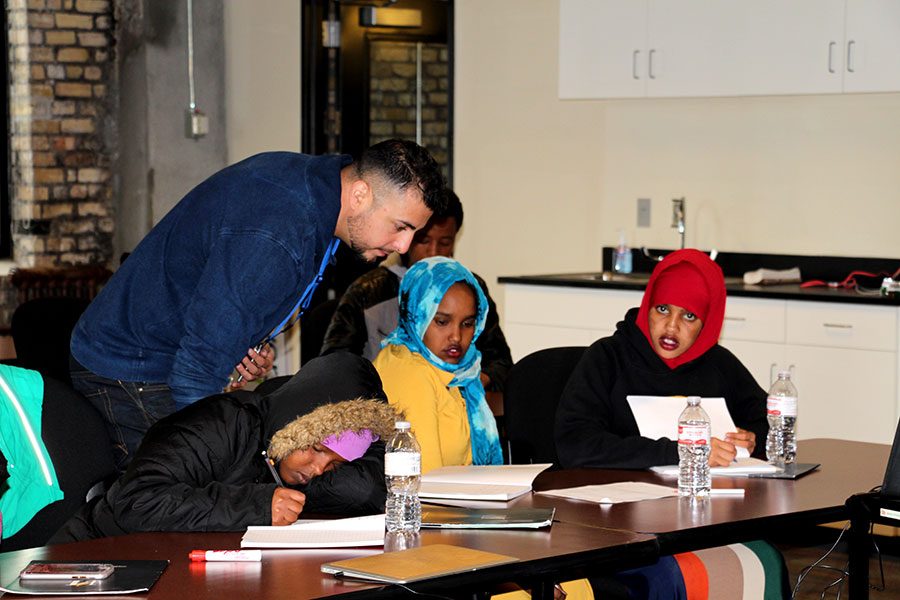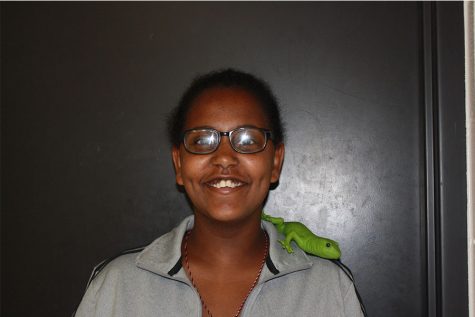Minorities in History: Somali students learning history in a new style
Members of Waryaa working on their interview questions for their oral history project at the Mill City Museum
October 18, 2016
Waryaa is a youth program that is offered for Somali high school students who want to explore what is means to be Somali in Minnesota. Students discuss about their community and cultural heritage. The program allows students explore culture and stories in their community.
Waryaa is provided by the Minnesota Historical Society (MHS). MHS provides different programs for youth to volunteer and intern. This program is a paying high school internship program for students with Somali heritage.
This program is high school internship, with the goal of participants having job experiencence and learn about professional skills for the experiences they’ll have after high school.
Jessica Hobson is a program associate for MHS and a worker in the inclusion and community engagement is the main contributor to this program. Hobson coordinates youth programs and runs the American Indian youth fellowship in addition to being an important individual to Waryaa.
Waryaa is a program that was created by the partnership between MHS, Ka Joog, an organization that provides specific programs to support Somali youth and their families, Mill City Museums, and Jessica Hobson and her team.
Even though when Hobson and her team wrote a grant to Museums Connect talking about involving Somali youth in museum and it was not approved, they continued with the program because they thought it was a really important and worth having.
“It’s important to have representation and we don’t currently have a program that connects with Somali youth and will also we are in the planning, very early planning stages of a Somali Exhibit at the Minnesota history center in 2018 that we wanted to connect those programs and the community early,” said Hobson, explaining why this program was only available for Somali students.
Waryaa is available for three high schools around the Twin Cities. Nine students from Higher Ground Academy, South St. Paul, and Minneapolis South High School are participating in this program. These nine students had to go through an application and interview process.
Meetings happen at the Mill City Museum every Saturday. There, students explore the different ways of life in Minnesota through the lenses of different cultures including their own.
In the months to come, the students will work on different projects that will lead to their final project: a cookbook. This cookbook is supposed to represent the intergenerational stories and their own heritage through food.
Naima Abdi is a Somali student at South. She is one of the participants of this program. Abdi is a junior who found a deep interest in her history class. And when a program like this presented itself, she gladly took it.
Students who participants are expected to learn and discuss about different types of histories that happened around them: “How the world change, what happened before, to learn the world history,” said Abdi, explaining what she wants out of this program.
As of right now, students are working on creating an oral history in which they have to interview a community member about their stories of being a Somali immigrant to Minnesota. After the students complete the interview piece, they are supposed to tell an oral story using the interview about Somali life in Minnesota.
“The outline media coverage of the Somali communities can be troubling, especially for youth so we wanted a place for Somali youth to feel empowered, to feel like they have a voice,” said Hobson explaining the importance of programs that are available for minority populations.
Throughout this program the students learn about the world history and their own histories. The students are going to learn how they fit in into this society, what society sees them as and with that the students have questions they want answered after this program about society.
“What they [society] believe in my religion, what they believe in Islam” said Abdi.






